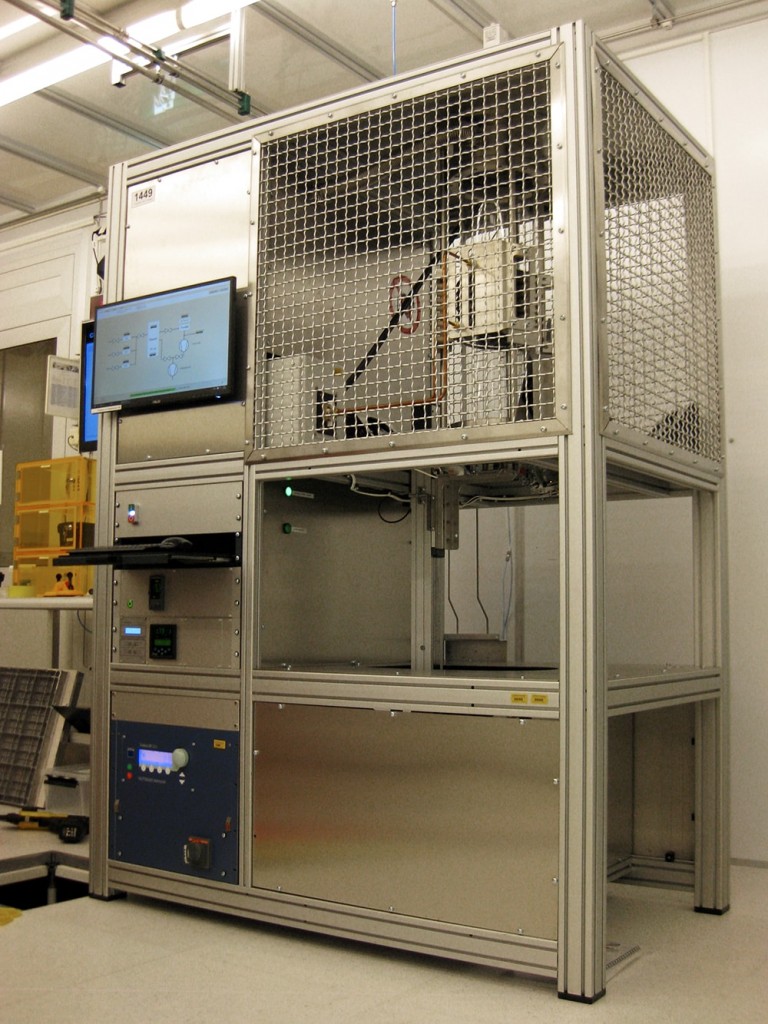Graphensic AB is using patent protected process for epitaxial graphene growth on SiC. The process is realized in radio frequency inductively heated chamber in which a graphite crucible is placed. The graphene sample is mounted inside the crucible (Fig. 1). The graphene growth takes place at a temperature of 2000oC and argon atmosphere. When the temperature is raised above 1400oC, due to the thermodynamics of SiC, Si will sublimate leaving carbon atoms behind. They will move around via surface diffusion and will finally rearrange in a pattern that is given by an energetically driven surface reconstruction. The resulting lattice constant is commensurate to that of graphene and therefore it is said that graphene grows epitaxially. This has been confirmed only for graphene grown on the Si face of SiC. The reconstructed layer is called “buffer layer” or “zero layer”. Upon further heating the buffer layer converts to a true single layer graphene and more layers can be produced by adjusting the process conditions. Schematic illustration of graphene formation is presented in Fig. 2. Graphene area can be from 5×5 mm2 and up to a 4 inch wafer. Graphensic can provide graphene on all three SiC polytypes: 4H, 6H and 3C.



